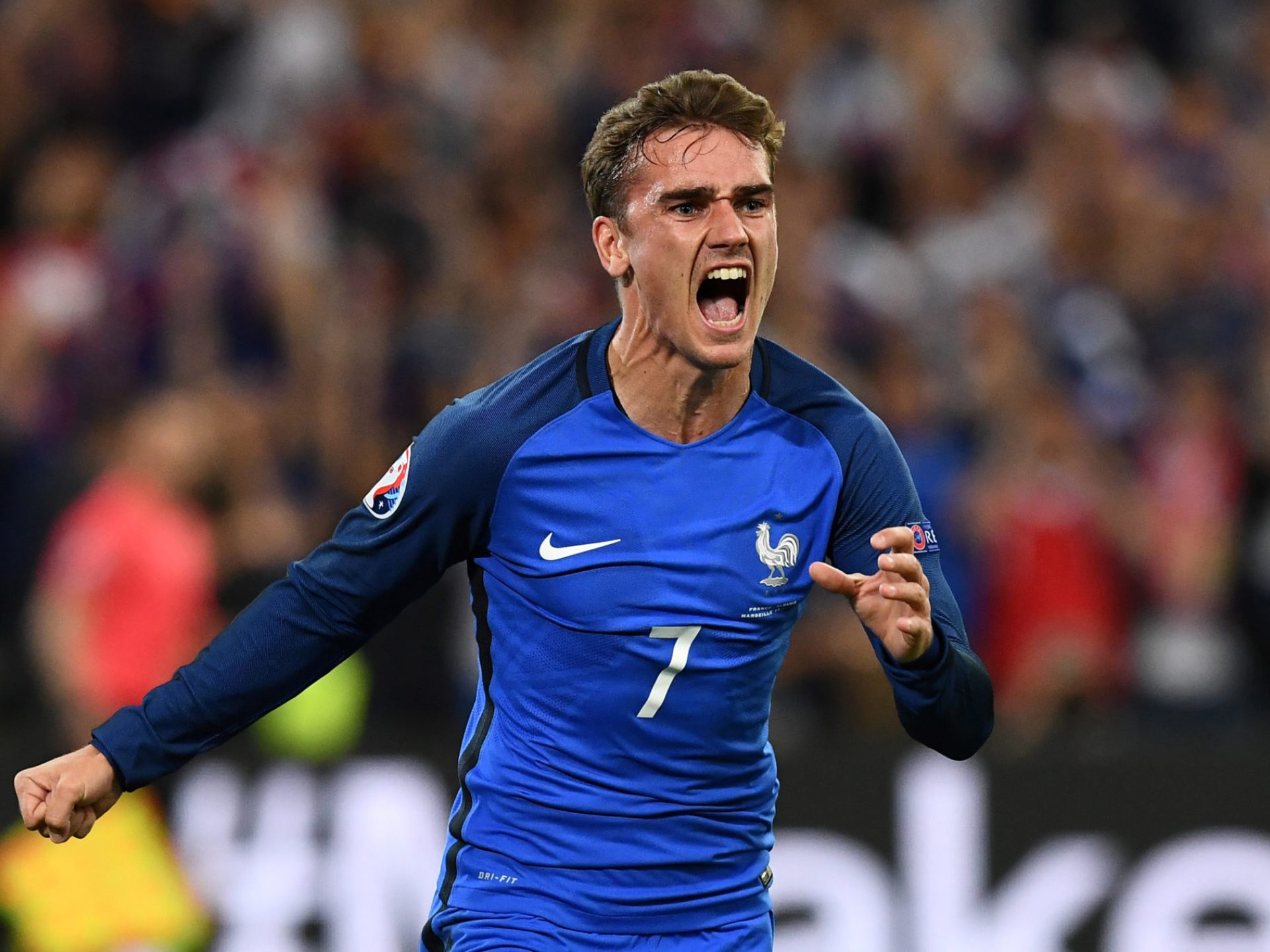Magazine

April 8, 2020

This article was originally published in Populous Magazine, our biannual publication featuring news and trends from the worlds of sport, entertainment, and major public events. Find out more, and sign up to receive a free copy, here.
In soccer, no player received more analysis, more praise, more criticism than the centre forward, aka the striker. With Europe’s top men’s national teams forced to wait a year for the next continent-wide championships, Joe Boyle pays tribute to the attacking men of European soccer.
In December 2018, Luka Modric did something rather unusual. The Croatian and Real Madrid midfielder became the first player since 2007 who wasn’t a centre forward to win soccer’s Ballon d’Or prize, awarded by journalists to the player judged to be that year’s best.
It was only a brief hiatus, mind. Twelve months later, Lionel Messi reasserted the right for strikers to win the title, as they have done on 40 occasions since it was first awarded in 1956.
This record demonstrates how centre forward remains soccer’s totemic position. This is the player tasked with the most important job of smashing, bundling, prodding, tapping, scrambling, nodding, poking, slotting, sweeping, drilling or rolling the ball across the line and between the posts.
But is the term ‘centre forward’ useful? In what sense does France’s Kylian Mbappé, for example, star of the 2018 FIFA World Cup, restrict himself to playing in a purely forward and central position? The term made better sense in the late 19th Century. At that point, the favoured 2-3-5 formation boasted not one or even two forwards, but five: two outside forwards, two inside forwards and the centre forward. With the front line so crowded, it made sense to plough one’s own furrow.
"Some of Europe’s most influential forward players now compete in a position called the false nine, dropping deep and finding space between midfielders and defenders."
FIFA’s technical report after the 2018 World Cup in Russia gave an explanation for the changing nature of the centre forward’s role. “From an attacking perspective, the role of the traditional number 9 has become more challenging due to the limited space,” it concluded. “Quick ball circulation can help to create space and overcome compact units.”
The result is that some of Europe’s most influential forward players now compete in a position called the false nine, dropping deep and finding the space between the lines of central midfielders and central defenders. Dusan Tadic, AFC Ajax’s Serbian captain, who has become pivotal in the role as the Dutch side rediscovers some of its past glories, describes its liberating effect well: “This is like a fake striker,” he says. “I move everywhere, with a little bit of a free role and I am very happy.”
Let us not, however, with all this talk of falseness and fakery, lay to rest the authentic centre forward. The leading scorers in the Italian, German and English leagues at the end of 2019 (Ciro Immobile, Robert Lewandowski and Jamie Vardy, respectively), together with Karim Benzema in Spain, who is a goal behind the incomparable Messi, are all recognisable centre forwards, rather than false nines.
To the delight of traditionalists, they are also tall, all except Vardy above 6ft (1.83m). This tradition of the towering striker, all knees, elbows and missing teeth, is partly a sepia-tinged soccer folk memory, but surely has roots in the northern European climate. As British soccer writer Jonathon Wilson points out: “There was a time, when boots were heavy, balls soaked up water, technique was poorer, goalkeepers often seemed like bystanders and pitches were mudbaths, when playing for territory was the reasonable thing to do. Why would you want the ball near your own goal when the possibility of something going wrong was so high?”
It is tempting to see the development of the centre forward as a response to geography, even something distinctly northern European: in wet conditions, with a ball like concrete, you’re better off lumping it to the big man up front, as far as possible from potential calamity near your own goal. Even today, if you look at the leading scorers so far in this year’s Champions League, those who measure 6ft tall or more are all northern European. The South Americans in that list are much shorter.
Traditionalists might find comfort in such facts and will delight at the emergence of players such as the young Norwegian Erling Braut Haaland, who has been scoring plenty in the Champions League for FC Salzburg and Borussia Dortmund, and measures in at 6ft 4ins (1.93m). Here is the evidence, they insist, that the model of the strapping centre forward remains relevant.
But not so fast. After all, Raheem Sterling, Kylian Mbappé, Dries Mertens and Memphis Depay are also in the list of top ten Champions League scorers so far this season. All of them are well short of 6ft and they are far from the exception. This trend towards shorter centre forwards is in fact a response to a changing soccer culture, argues Simon Kuper, author of Why England Lose & Other Curious Football Phenomena Explained.
“There are two big changes,” Kuper says. “First, the death of the cross. Crossing turns out to be a really inefficient way of scoring goals. In England it was once an essential tactic but it has died out. Secondly, the necessity to defend. Strikers spend a lot more time defending.”
Kuper, however, points to two strikers playing in Europe who don’t spend that much time defending: Argentinian Lionel Messi and Portuguese Cristiano Ronaldo. Then he talks of another Argentinian striker in Europe – Sergio Aguero – who was forced to adapt his style. “He spent several years at Manchester City as a non-defending centre forward which is why he scored so many goals. When [manager] Pep Guardiola arrived, he said: ‘In my system, because we press from the front, even you are going to have to defend.’”
National differences remain. Guardiola’s Manchester City will still face sides prepared to play long balls looking for their centre forward to challenge and set up a scrap for the loose, second ball. However, these differences are smoothing out.
“At academy level, the big clubs have a lot of foreign coaches,” Kuper adds. “It’s why England has so many small players now. In the old days, little players at academies would have been eaten alive and kicked off the park, but now coaches are really excited about them and will protect them.”
The academies work on the technical attributes that make a great centre forward. In the end, however, only one thing matters. David Endt, former AFC Ajax general manager, revealed to FourFourTwo magazine how, when still a youngster, Sweden’s maverick centre forward, Zlatan Ibrahimovic, once turned to Dutch legend Marco van Basten for advice:
“Van Basten used to tell him, ‘In football it’s nice to be a great technician, but at the end of each season, people will count how many goals you scored… Focus on that.’”
Lorem ipsum dolor sit amet consectetur, adipisicing elit. Non facere corporis et expedita sit nam amet aut necessitatibus at dolore enim quis impedit eius libero, harum tempore laboriosam dolor cumque.
Lorem, ipsum dolor sit amet consectetur adipisicing elit. Illo temporibus vero veritatis eveniet, placeat dolorem sunt at provident tenetur omnis, dicta exercitationem. Expedita quod aspernatur molestias eum? Totam, incidunt quos.